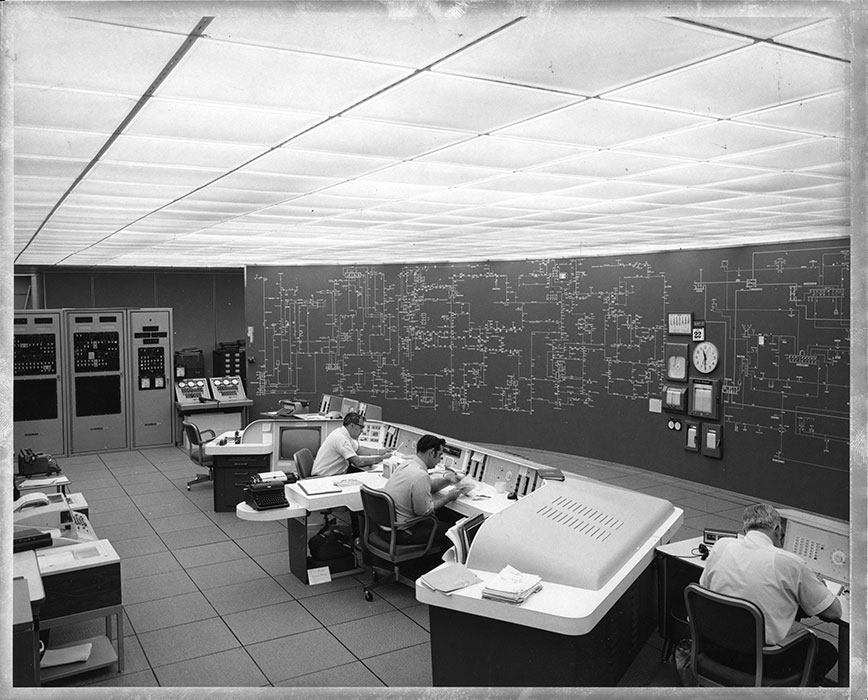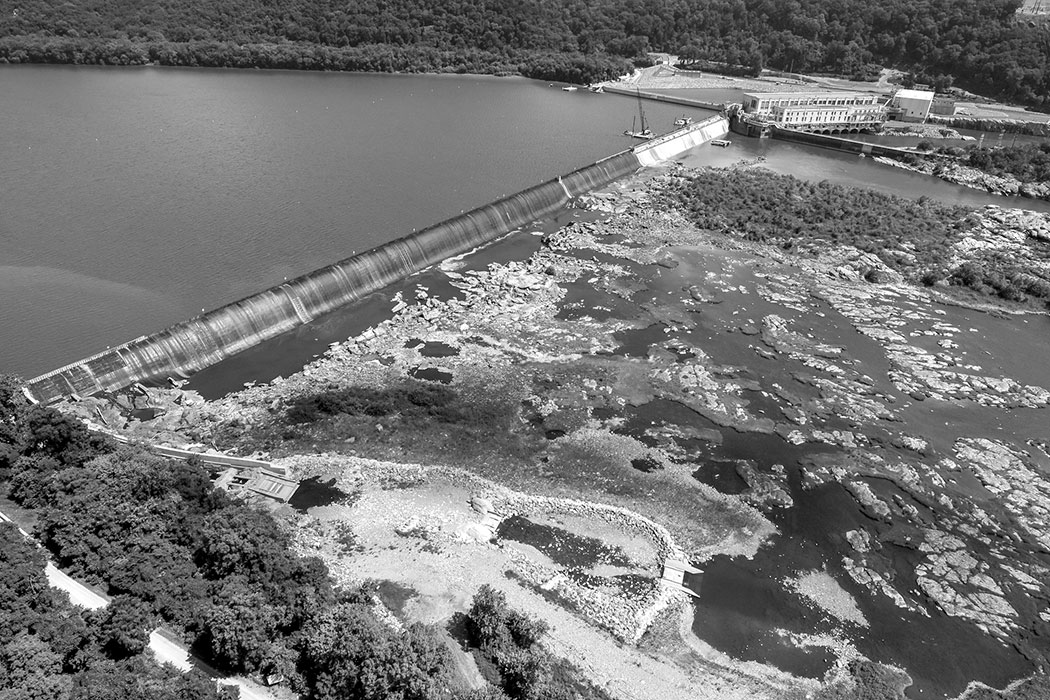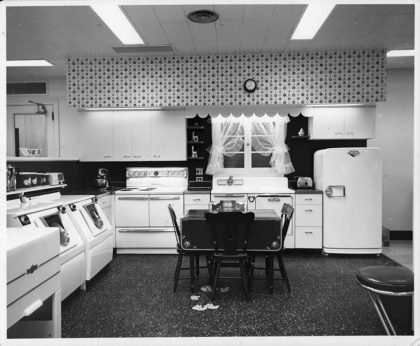The 1950s
Focus on electrification
Electric home appliance sales skyrocketed in the 1950s. In 1946, before wartime restrictions had been fully lifted, 19,676 refrigerators had been sold in PP&L’s service territory. By 1951, 62,355 refrigerators had been sold to PP&L customers. The sale of electric ranges, water heaters, freezers and washing machines soared.
1956
Formation of PJM Interconnection
The Pennsylvania-New Jersey Interconnection agreement, which had been signed by PP&L, Philadelphia Electric Co. and Public Service Electric & Gas Co. in 1927, and completed in 1931, was upgraded in the 1950s into one of the nation’s premier power pools.

1958
Powering up
PP&L adds more than 150 megawatts of power generation capacity with the completion of Holtwood Unit 17 and Martins Creek power generation plants.

The Holtwood Dam and power plant.
Photo Credit: John Pavoncello - The York Dispatch
The 1950s
Focus on electrification
Electric home appliance sales skyrocketed in the 1950s. In 1946, before wartime restrictions had been fully lifted, 19,676 refrigerators had been sold in PP&L’s service territory. By 1951, 62,355 refrigerators had been sold to PP&L customers. The sale of electric ranges, water heaters, freezers and washing machines soared.
The 50s also saw a boon in an electrical device that would change American households for generations – the television. PP&L actively marketed electric products through advertisements, displays and demonstrations, including showing home economics students how the electrical appliances work.
Demand for electrical appliances, including the TV, skyrocket in the 50s
In the early 1950s, Americans reveled in the post-war prosperity that followed World War II. Families were growing, the Volkswagon Beetle had arrived and consumers clamored to get their hands on a television set to watch “I Love Lucy.”
The television was introduced at the New York World’s Fair in 1939, but wasn’t produced for the mass market until 1946. By 1950, PP&L noted that 35,415 television sets had been sold to its customers.
The television was one of several new electric appliances PP&L customers wanted — and demand was skyrocketing.
Electrifying homes
Since the 1920’s, PP&L had served as an appliance retailer, powering progress in the communities it served. PP&L’s Tower Building had a sales floor stocked with electric washers and wringers, GE refrigerators, Hotpoint stoves, lightbulbs, toasters and more. Customers would pay a small down payment, with the remainder as installments on their “light bill.”

Showrooms were open six days a week in every district office in PP&L’s territory. By 1951, 62,355 refrigerators had been purchased by PP&L customers — nearly triple the number in the company’s service territory in 1946. Families added new electric ranges, water heaters, freezers, dryers and dishwashers.
PP&L’s Home Economics and Home Service departments hosted appliance demonstrations and classes to show customers how to use the new appliances. By the mid-1930s, PPL’s Home Service Department was 56-women strong — one of the largest among investor-owned utilities in the U.S.
Demonstrations and cooking classes continued through the 50s and 60s. In 1953 alone, PP&L home economists logged 550 classroom demonstrations. Marge Schwenker worked for PP&L in Scranton in the ‘60s and ‘70s and remembers making rose petal jam during cooking classes at the PP&L substation on Lark Street. At that time, PP&L promoted new electric appliances through radio ads, classes and incentives for employees.
Increased demand
The demand for modern appliances put an increased strain on electric utilities. In 1948 alone, PP&L President Charles E. Oakes noted 116 industries and 13,000 new electric customers had moved into the service territory. By 1957, PP&L covered 20 percent of Pennsylvania’s population, and Oakes noted usage had increased 241 percent since 1946.
Providing safe, reliable energy to enable growth and prosperity for its regions was of utmost importance to PP&L. In 1945, the company had already built the new Sunbury Steam Electric substation to keep up with demand.
The ‘50s also saw several major additions as demand necessitated expansion. In May 1953, the company purchased Scranton Electric Co. The Martins Creek plant went on line the following year. In 1955, PP&L purchased Pennsylvania Water & Power Co., with groundbreaking for Brunner Island power generation station following in 1958.
1956
Formation of PJM Interconnection
The Pennsylvania-New Jersey Interconnection agreement, which had been signed by PP&L, Philadelphia Electric Co. and Public Service Electric & Gas Co. in 1927, and completed in 1931, was upgraded in the 1950s into one of the nation’s premier power pools.
A five-party agreement created the Pennsylvania-Jersey-Maryland power pool, known as PJM, a transmission network that remains today. PJM operates a competitive wholesale electricity market and manages the high-voltage electricity grid to ensure reliability for more than 65 million people in Delaware, Illinois, Indiana, Kentucky, Maryland, Michigan, New Jersey, North Carolina, Ohio, Pennsylvania, Tennessee, Virginia, West Virginia and the District of Columbia. It identifies the most effective and cost-efficient improvements to the grid to ensure reliability and economic benefits on a system-wide basis.